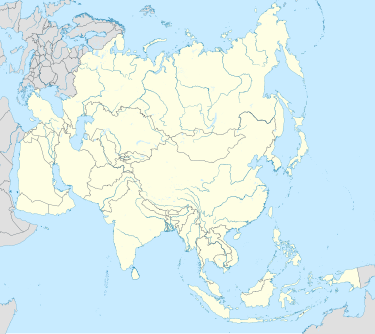Chumbi
Village in the Chumbi Valley of Tibet, China From Wikipedia, the free encyclopedia
Chumbi (Tibetan: ཆུ་འབི, Wylie: chu 'bi, THL: chu bi; Chinese: 春丕; pinyin: Chūn pī) is a historic village in the Chumbi Valley or the Yadong County of the Tibet Autonomous Region of China. It is in the valley of the Amo Chu River, where the route from Sikkim's Cho La Pass meets the Amo Chu Valley.[1] The "Chumbi Valley" of the European nomenclature derives its name from the village of Chumbi.[2][a] It was the administrative center of the lower Chumbi Valley until the Chinese take-over of Tibet in 1950, after which Yatung became its headquarters. Chumbi is also associated with the Sikkim's royal family, which had a summer palace in the village.[3][4]
Chumbi
ཆུ་འབི • 春丕村 | |
|---|---|
| Coordinates: 27.4445°N 88.922°E / 27.4445; 88.922][[Category:Pages using gadget WikiMiniAtlas]]"},"html":"Coordinates: </templatestyles>\"}' data-mw='{\"name\":\"templatestyles\",\"attrs\":{\"src\":\"Module:Coordinates/styles.css\"},\"body\":{\"extsrc\":\"\"}}'/>27°26′40″N 88°55′19″E / 27.4445°N 88.922°E"}"> | |
| Country | China |
| Autonomous Region | Tibet |
| Prefecture-level city | Shigatse |
| County | Yadong |
| Town | Xarsingma |
History
Summarize
Perspective
The Chumbi Valley was originally part of the Lepcha territory.[5] In the 13th or 14th century, it began to be colonised by Khampas from the Kham region of Tibet.[6] A Minyak prince called Khye Bumsa (Wylie: Gyad 'bum bsags) is said to have settled in Chumbi and established a small kingdom. He later built an alliance with the Lepchas in present-day Sikkim and expanded into that region. The ruins of the house built by Khye Bumsa were reportedly present in the Chumbi village till the end of the 19th century.[7]
The lower Chumbi valley appears to have been under the control of the Lepchas till the time of the Fifth Dalai Lama. A Lepcha chieftain called Gaeboo Achyok (Gyalpo Ajok, r. c. 1660 – 1676) based at Damsang (in the present day Kalimpong district) faced invasions from the Bhutanese and obtained Dalai Lama's assistance. The Bhutanese captured and executed Achyok, after which the Tibetans continued to fight the Bhutanese. The end result of these conflicts is not clearly documented, but the Bhutanese were evicted from the lower Chumbi Valley and its control passed to the Sikkimese and Tibetans in some form.[8][9][10][b]
The Sikkim Chogyals constructed a palace at Chumbi during the reign of Chakdor Namgyal (r. 1700–1717), who is said to have received the lower Chumbi valley as an estate from the Tibetan government.[12] It came to be used as a regular summer residence of the Chogyals since 1780.[12] The Chogyals regarded the people of the lower Chumbi Valley as their subjects until 1959, irrespective of the prevailing official boundaries.[13]
Geography
The village of Chumbi is roughly in the centre of the stretch of Amo Chu valley between Yatung and Rinchengang. The road from the Cho La pass on the Sikkim border arrives here. On the Sikkimese side of the pass, there was a direct road to Tumlong, the capital of Sikkim and the seat of its royalty in the 18th and 19th centuries.
About 2 miles (3.2 km) upstream from Chumbi lies the town of Yatung (Shasima), the present headquarters of the Yadong County. Downstream from Chumbi are the twin villages of Chema and Pipitang, where the route from the Nathu La pass arrives, and Rinchengang, which receives the route from the Jelep La pass.
Notes
- It is likely that prior to the European involvement, the term "Chumbi Valley" might have been used only for the lower Chumbi Valley below Yatung. The Tibetans call the overall Chumbi Vally "Tromo" with its headquarters at Phari.
- The "Sikkim" mentioned in these sources is mainly southeastern Sikkim, which appears to have extended on both the sides of the Jelep La pass. Chogyals' Sikkim was to the west of the Teesta river.[11] After the elimination of the Damsang chieftaincy, the way was opened for the Chogyals to expand east of the river.
References
Bibliography
Wikiwand - on
Seamless Wikipedia browsing. On steroids.



